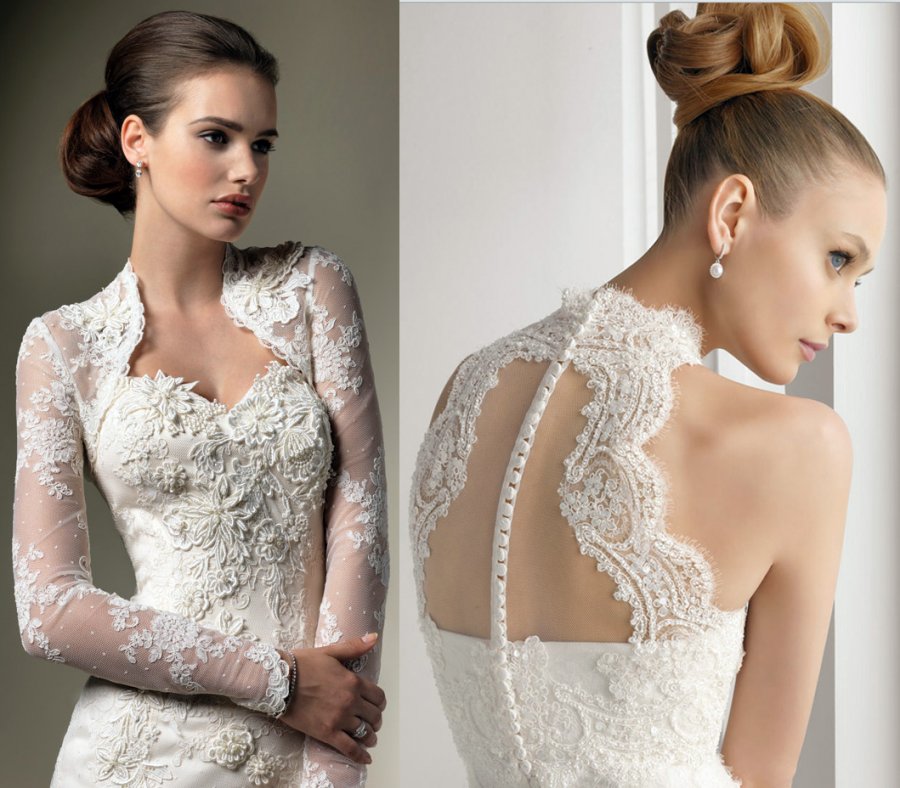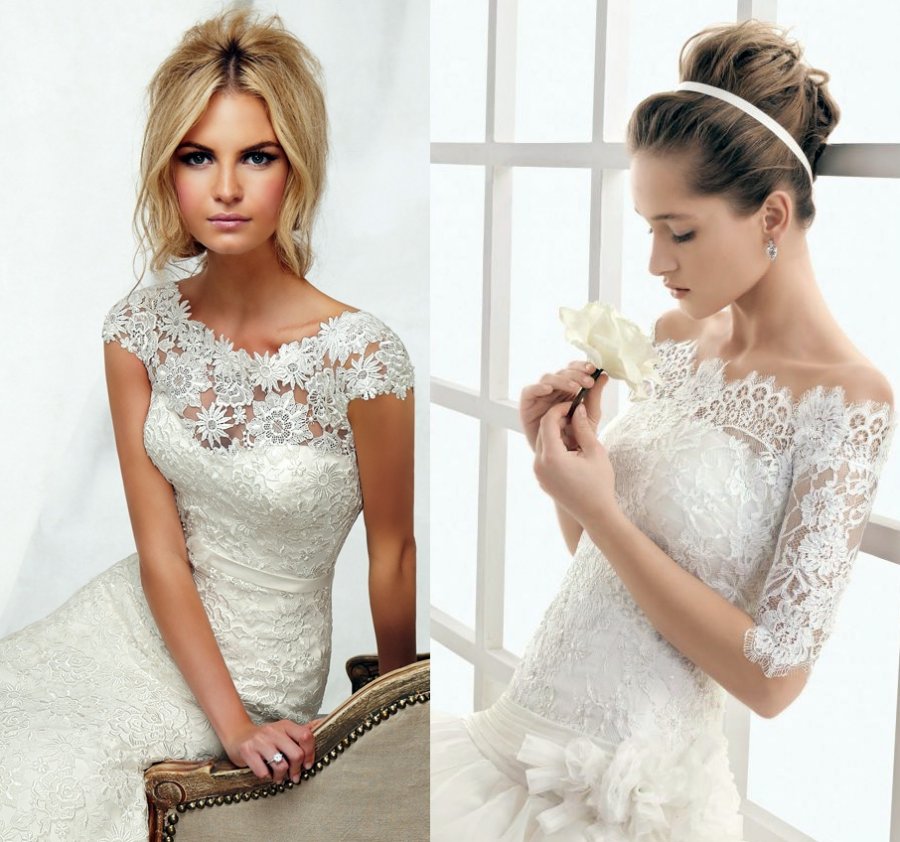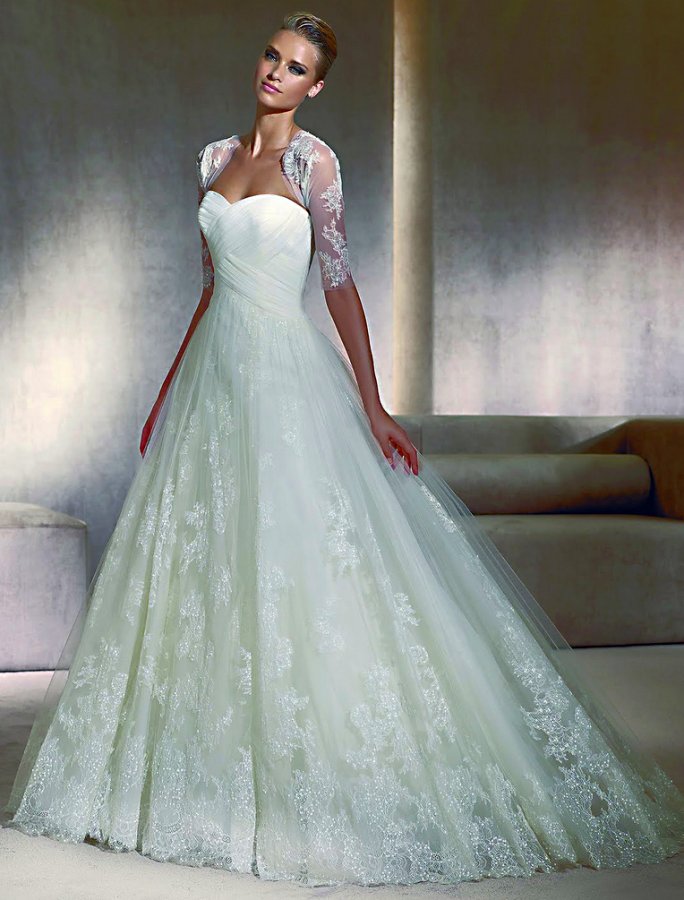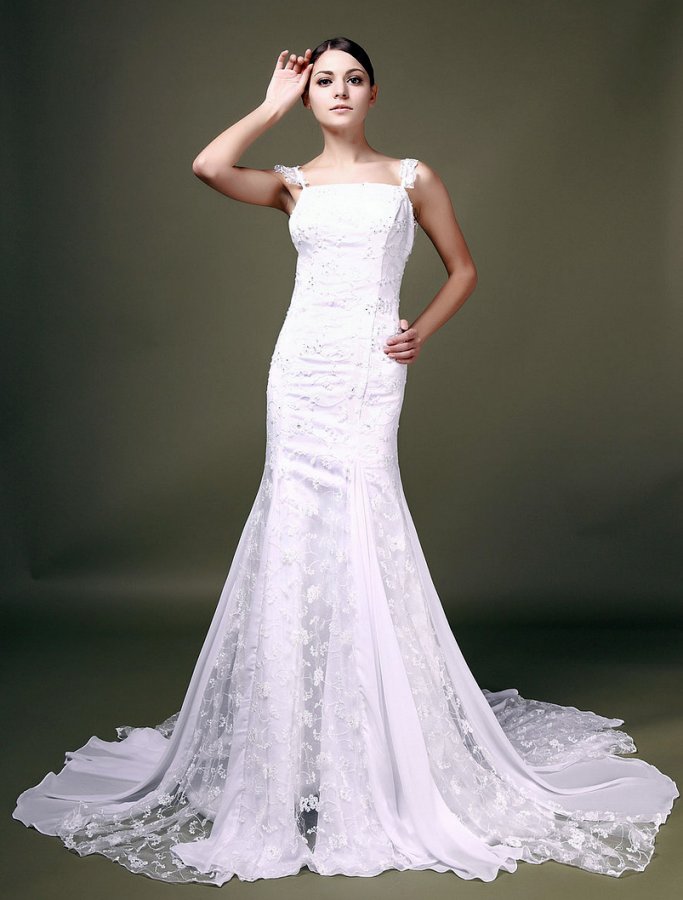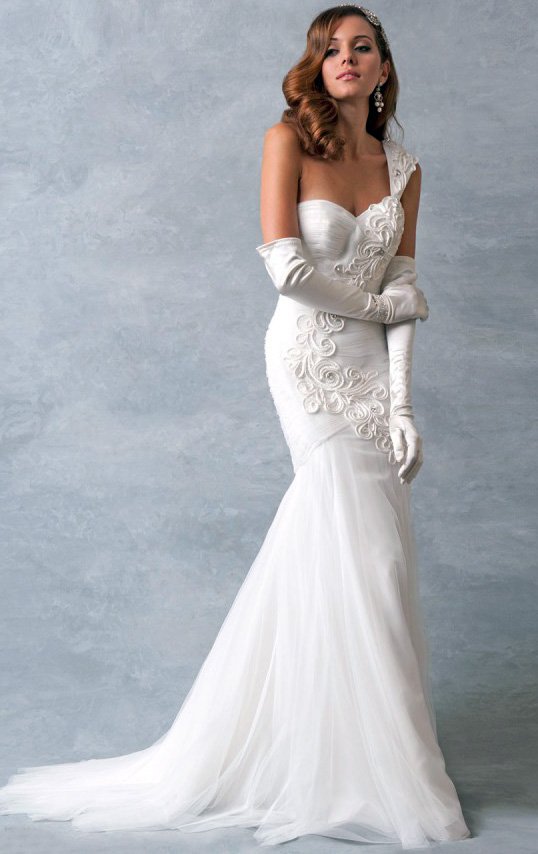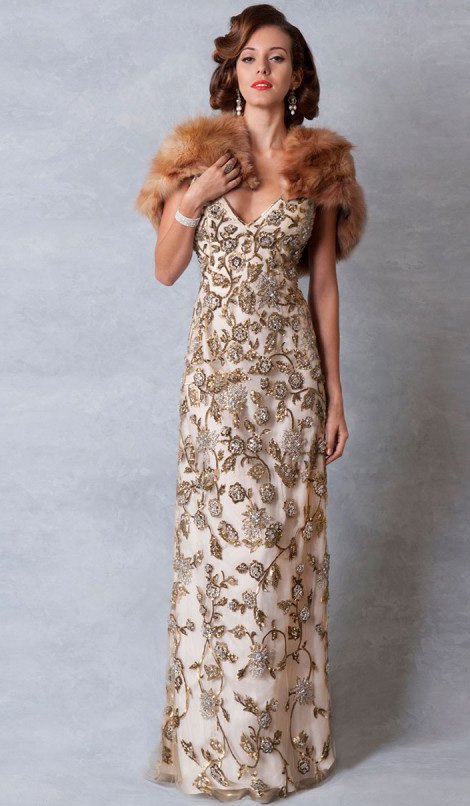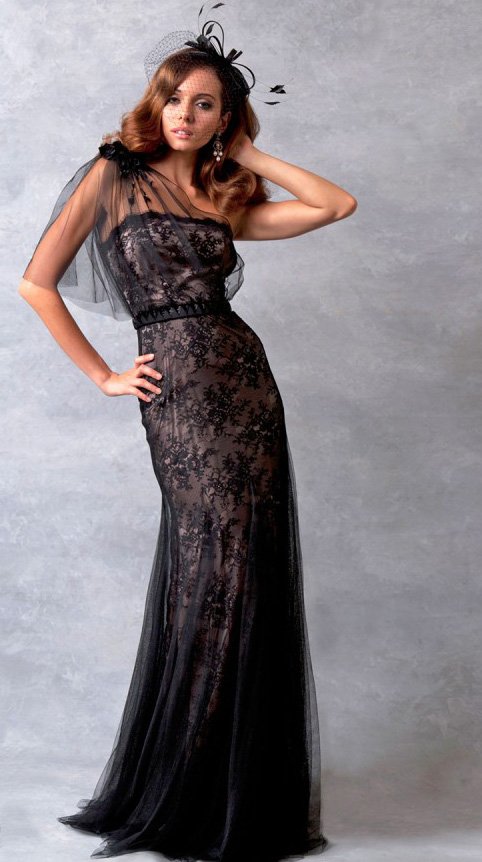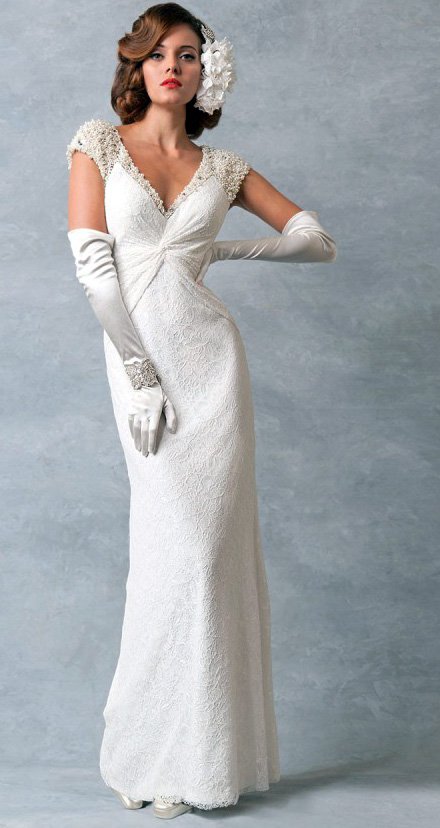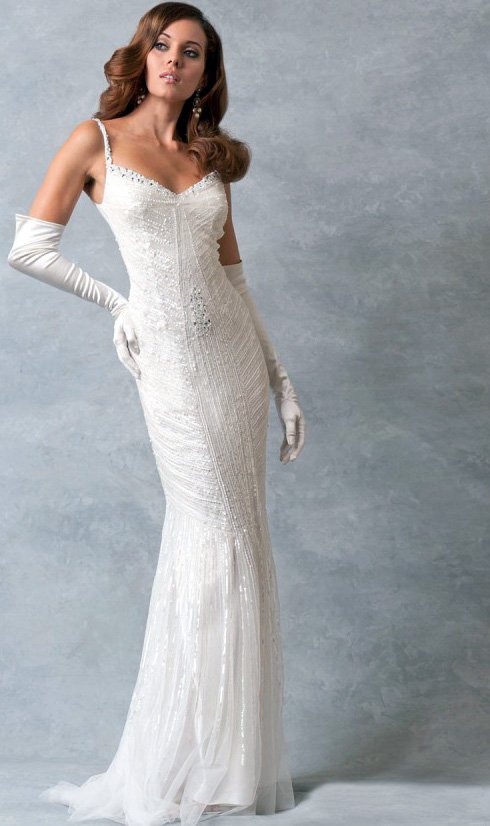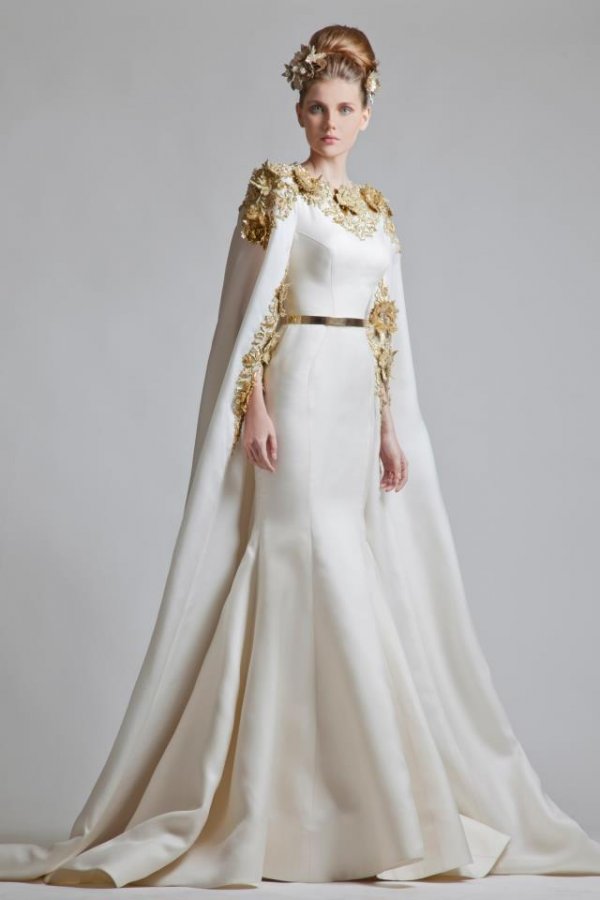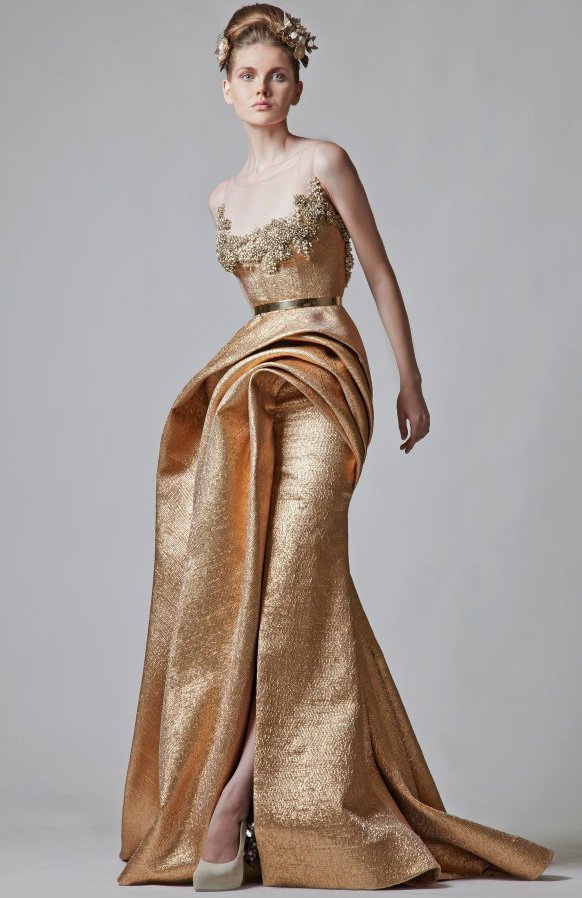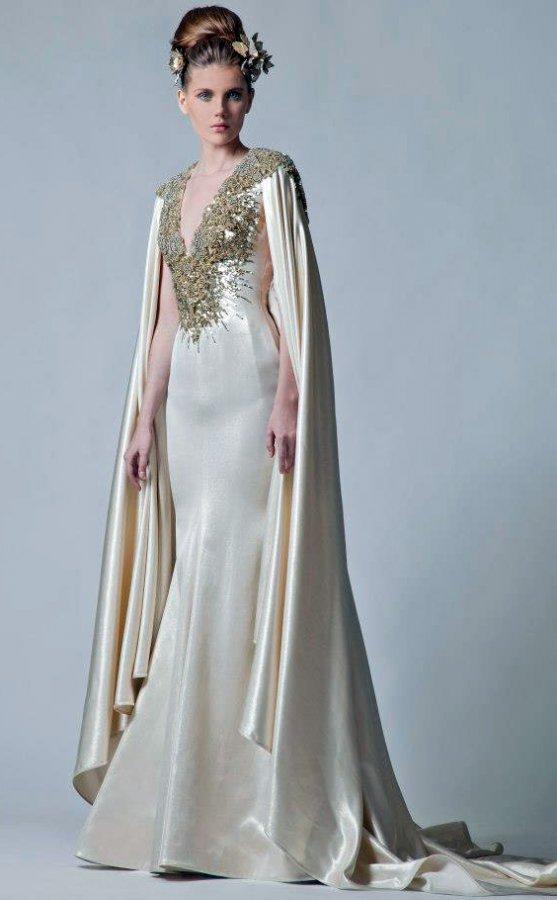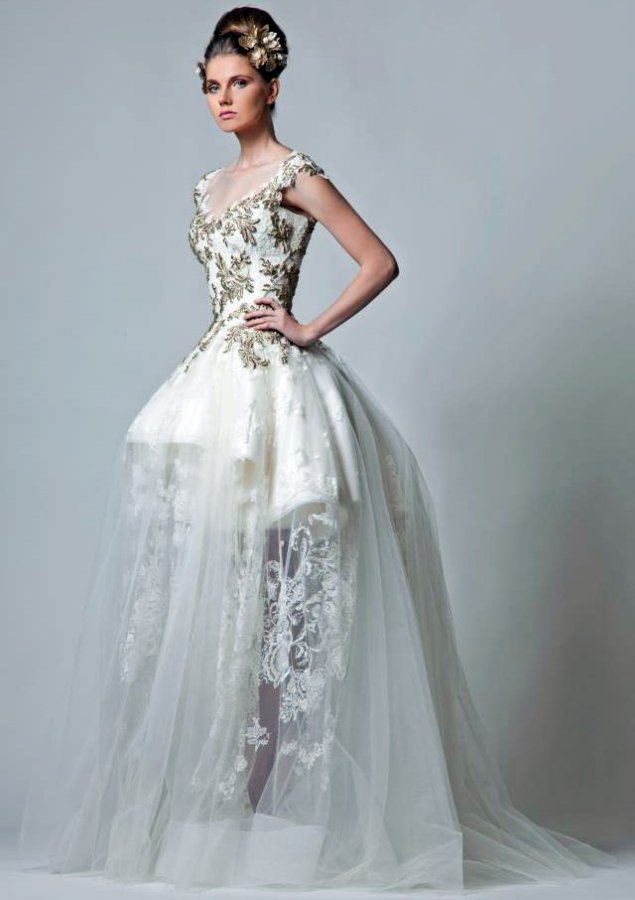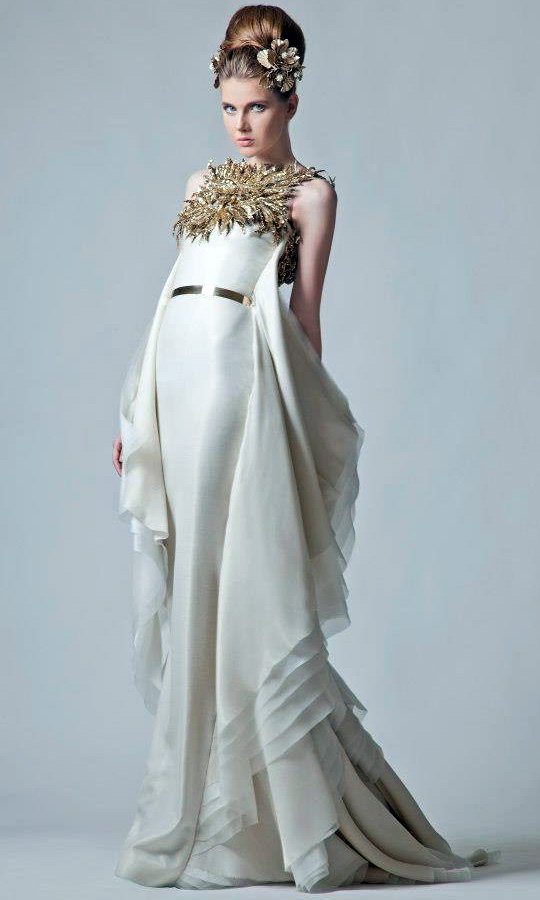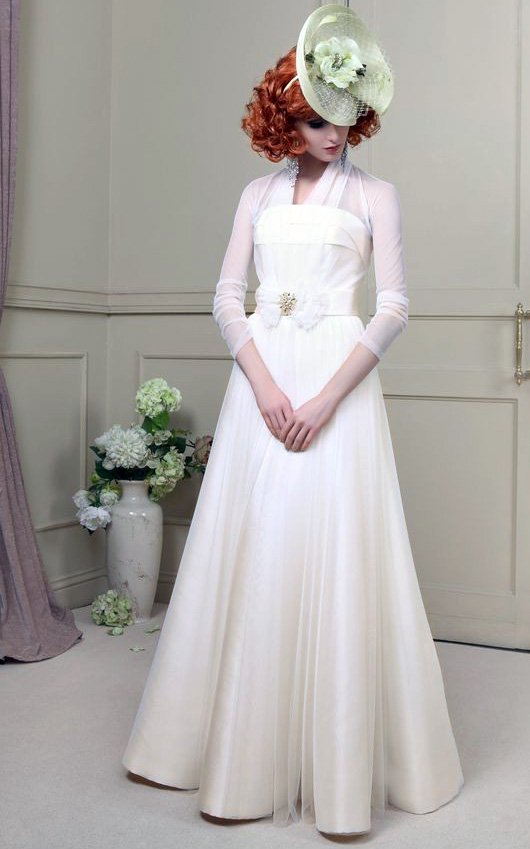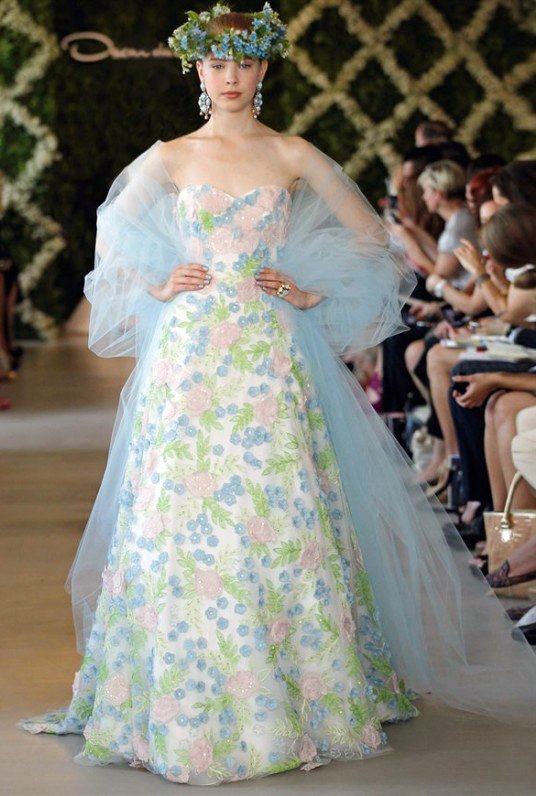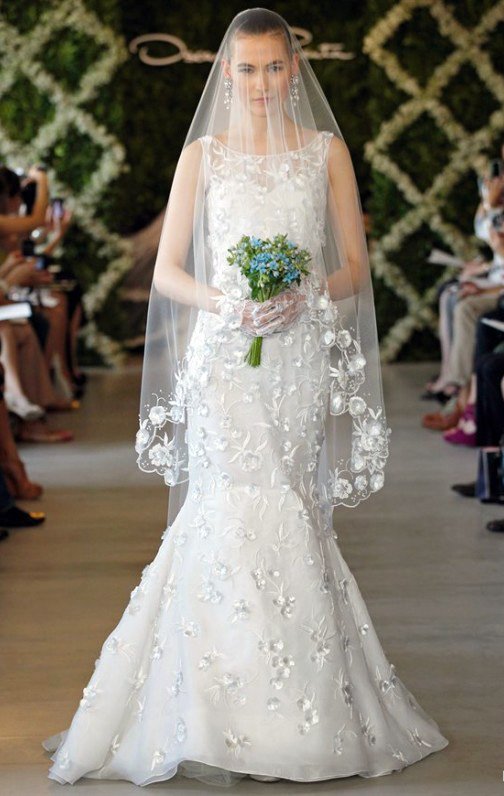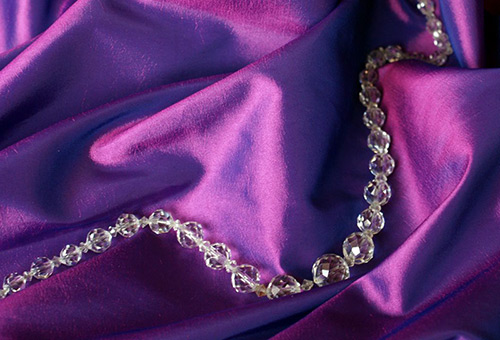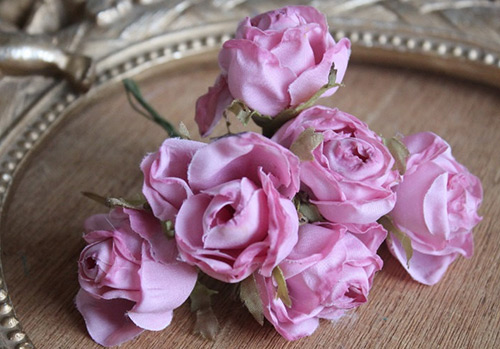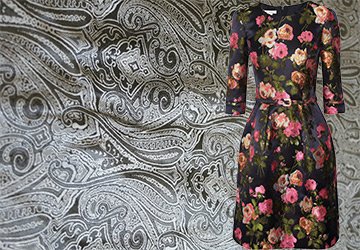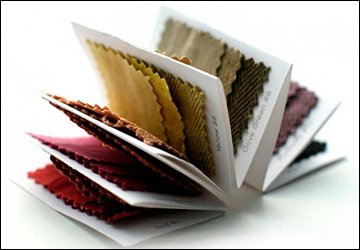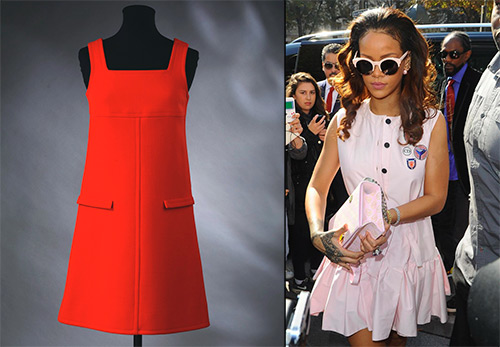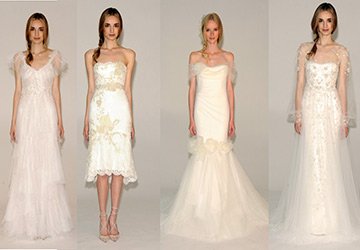Bridal fashion
Fabrics for sewing wedding dresses
Wedding themes are always interesting for girls. Great importance is attached to this event. And the most important wardrobe item is the bride's dress. If you buy or sew a dress, the first thing you think about is what fabric will my dress be made of?
Modern fabrics give free rein to the unrestrained imagination of designers. A dress made of the fabric of your choice is the strongest means of expression and emotion.

What fabrics for a wedding dress are more expressive?
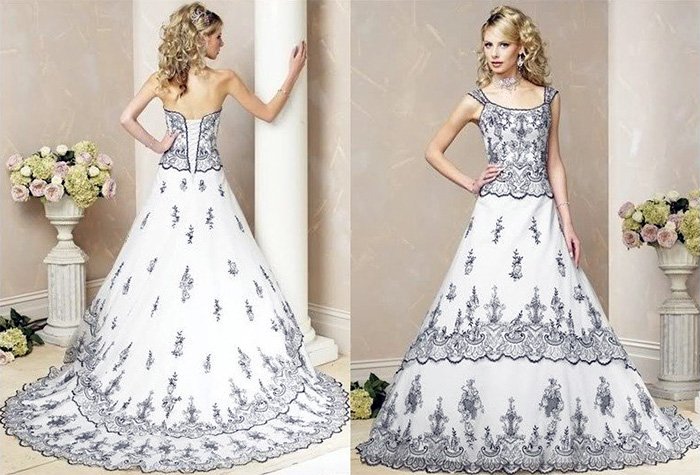
First of all, they choose fabrics that are shape-stable, have a volumetric structure, elastic and dense. It is easiest to build intricate options from such fabrics. Satin, shantung, brocade, jacquard, such as damask, taffeta, organza, two-layer quilted fabrics are considered classics. An abundance of relief patterns on fabric, ornamentation, an abundance of various types of decoration are welcomed. Quilted fabrics are embossed and voluminous.
According to the texture, the fabric for sewing a wedding dress is divided into several types: matte, shiny, reflective (organza, silk, satin), natural or synthetic, possibly mixed.
Wedding fabrics
Atlas - lightweight material. It attracts attention with its smooth, shiny surface. Atlas has always had a special and prominent place among the fabrics for wedding dresses. This fabric has always been in great demand. The atlas can be supplemented with interesting effects. For example, you can use wrinkled trim or embroidery on this fabric. Satin can be made of natural silk fibers or synthetic blended. Most often in wedding dresses, satin is combined with matte fabrics and decorated with beads, glass beads, rhinestones or lace embroidery. Despite the fact that satin is one of the most luxurious options, especially from natural silk fibers, you need to consider that such fabric will be easily creased. And besides this, the atlas can give out flaws in your figure. It will wrinkle into folds where it is not needed at all. Therefore, only if you are confident in the perfection of your figure, use an atlas. And he will make you even more perfect.
Silk - one of the most beautiful fabrics, and therefore the most expensive. However, if the silk is natural, the dress will wrinkle easily. A high-class master must necessarily sew a dress from silk, since when cutting one must take into account that silk is a smooth and light fabric, therefore it can slip, slide, etc. It should also be remembered that silk and other fabrics with a smooth and shiny surface will plump a little, especially you will see this in your wedding photos.
Brocade... If the wedding is planned in winter, heavy and dense fabrics are suitable for the dress. For example - brocade... The fabric is luxurious, one might say, regal. After all, it was not for nothing that once only high-ranking persons wore it, since it included fibers made of real gold or silver threads. Therefore, the fabric was extremely expensive. But now the technology of making brocade, like many other fabrics, has changed, so brocade has become available to many. And beauty, volume, shine and everything that can be called in one word - luxury, still attracts to itself.
Taffeta - thin cotton or silk fabric with plain weave threads. The surface of the taffeta is somewhat hard and shiny. It has been used in Russia for a long time. They especially loved to sew sundresses, soul warmers and hats from it. The advantage of this fabric is that it does not wrinkle, and a dress can be sewn from it for both winter and summer weddings. A taffeta dress can be decorated with lace, flowers, beads, bugles, tulle or silk netting.
Organza... The fabric is very popular for wedding dresses.It is made from silk, rayon or polyester by twisting two fibers. The fabric is thin and transparent, somewhat stiff to the touch, therefore it holds its shape well and is used to decorate a wedding dress. Organza makes fantastic frills, ruffles, flounces, high collars, puffy sleeves, and organza is also used for the petticoat. Organza is especially impressive with the play of color reflexes in draperies, folds and creases, as well as the play of chiaroscuro.
Chiffon... Light, transparent, almost airy fabric is used as decoration in wedding dresses. Chiffon is not suitable for the main fabric. But he can complicate the drapery or create an air cloud around the bride.
Crepe... This fabric can be either light or heavy, made from natural or artificial fibers. For a wedding dress, it is best to use a crepe with a smooth surface. Crepe is almost wrinkle-free and suitable for various styles. It can be easily decorated with lace and combined with many decorations.
Lace... Now lace is experiencing a new peak in popularity. The beauty of the lace dress draws special attention. The romantic image of a princess, femininity and innocence, airiness, lightness and luxury - these are the sensations that arise when a bride is wearing a lace dress. Lace can be any color now, but white or cream lace is preferable for a wedding dress. All the properties of lace, its transparency, winding lines of the ornament emphasize the feminine beauty and seductiveness.
Satin... Cotton or synthetic fiber fabric. In the first case, the surface is matte, and in the second - shiny, silky. The material is durable, with a smooth surface. Satin, which is based on synthetic fibers, almost does not wrinkle. This fabric looks chic with embroidery.
Velvet... Velvet is rarely used for wedding dresses, although it is one of the most beautiful fabrics. Evening dresses are often sewn from velvet. But in a wedding dress, he will also look luxurious, moreover, it does not wrinkle and is suitable in winter. In such a dress, you will be a queen and will not freeze. The fabric itself looks elegant, so it is better to choose a simple style and choose exquisite jewelry.
Wedding fabrics - fabric prints and decor
Ornamental designs on the fabric are highlighted by splashes of lurex. Fabrics with a pronounced relief contour of a tightly set pattern are very effective. An ageless theme is floral ornament. Particularly beautiful is the cloquet fabric with floral patterns - the outer layer is shiny and rustling of silk with polyamide, and the back is soft and warm cotton. This fabric is light and delicate, despite the complex and voluminous weaves. Fabrics that include metallic threads shimmer and sparkle, and besides, they retain their shape for a long time. All this shine of satin, lurex and metallic threads is set off by the matte and delicate texture of chiffon or crepe.
Beautiful and spectacular two-layer fabrics with a transparent colored top layer through which a shiny bottom layer of solid lurex shines through.
Mohair is added not for the sake of insulation, but for the sake of its fantastic beauty and decorative properties. Delicate and romantic mohair envelops the heroine of the celebration in a light haze.
Drawings on the fabric of a wedding dress are not a disappearing theme of flowers - a ball of flowers, graceful drawings on fabrics based on Chinese and Japanese art, where sakura branches, wild grasses, sea waves, flowers with long stems and leaves, jacquard designs on shiny satin, which appear more embossed.

Floral designs in lace and tulle, embroidery have remained popular for many years. Tulle netting and lace fabric are available in plain and printed form. These fabrics are embroidered with cord and braid, rhinestones and beads, sequins and sequins. Tulle looks very dramatic in decoration, but this fabric should not be used for sewing a dress.
A place is also given to black lace.The combination of various design techniques allows you to obtain fabrics that are unique in their expressiveness. The fabric can set the style of the dress and suggest the idea of the holiday.
As you know, the color of a wedding dress is the most powerful means of awakening emotions. White is associated with purity and innocence. But now different colors are offered, not only as finishing or additional details, but also as the main fabric with shades other than white. For example, one of the most popular is white with a cream shade. A prominent place is given to fabrics in ivory, light beige, and pink and apricot are also popular.
In the collections of designers, it is easy to notice that the traditional white color of a wedding dress is less than half of the proposed models. It is much more correct to choose the color of the wedding dress that suits you. When choosing a fabric, do it in good lighting so that you can see both texture and color shades. You can choose between golden and lilac, and creamy pink or beige shades, as well as pale green and apricot.
If you are blonde with pale skin, opt for a white or apricot color, golden or blue-gray will look beautiful on you. If you are a brunette with white skin, white, silver gray, pale pink will suit you more than others. Girls with hair the color of autumn leaf fall - for you a dress with a cream shade. You will look simply luxurious in it. Light-haired and gray-eyed, opt for milky whites, whites with a greenish tint, or with a shade of pink or lilac.
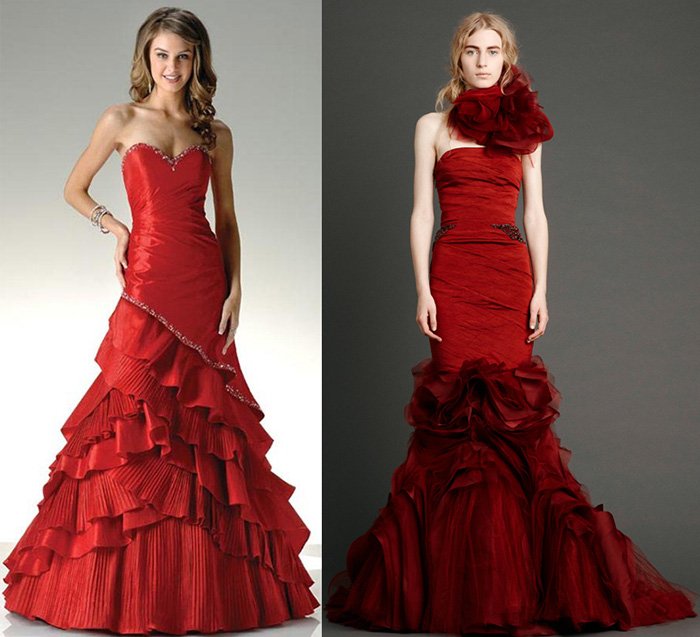
Now winning the sympathy of brides - red and golden brocade. But in this case, the dress should be perfectly tailored and look perfect on your figure.
The fabric and model of the dress should be chosen in a harmonious combination, taking into account the season and the image that is closer to you.
And so, you should decide on the choice of fabric for a wedding dress. Do not forget to take your figure into account when choosing the texture of the fabric, so that later you will not be upset that you look too plump in it, or the dress has crumpled on you in some strategically important places. Think about what density of fabric is more suitable for you, what time of the year the wedding is planned. The jewelry that you have prepared for the wedding dress should be in harmony with the fabric and style of the chosen dress. If the dress will be made to order, choose the best craftsman who can give the right advice.
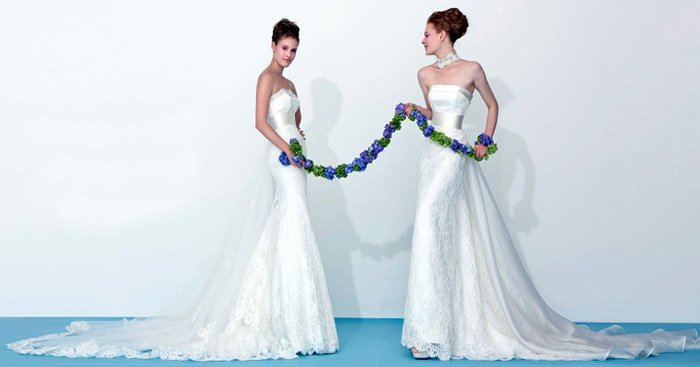
Comments and Reviews
Add a comment
Rating news
Shades of clothing that make women look younger
What shades of hair make women younger: rules and photos
Funny wedding dresses - photos and ideas
12 most expensive down jackets for the winter
How to look 25 at 40: tips from supermodels
Beautiful schoolgirls
Anti-aging haircuts and hairstyles for women
Fashionable skirts for autumn and winter
Fashionable women's trousers for the cold season
Fashionable and stylish sandals for summer 2024
Spring-summer 2024
 Fashionable dresses and tops with thin spaghetti straps
Fashionable dresses and tops with thin spaghetti straps
 Bandana tops: how to wear stylishly and beautifully
Bandana tops: how to wear stylishly and beautifully
 How to put together the perfect men's wardrobe for the summer
How to put together the perfect men's wardrobe for the summer
 Fashionable shorts for spring-summer 2024
Fashionable shorts for spring-summer 2024
 Fashionable skirts for spring-summer 2024: a guide to online shopping
Fashionable skirts for spring-summer 2024: a guide to online shopping
 The most fashionable dresses spring-summer 2024: styles and colors
The most fashionable dresses spring-summer 2024: styles and colors
 Fashionable total look 2024: image ideas and trends
Fashionable total look 2024: image ideas and trends

